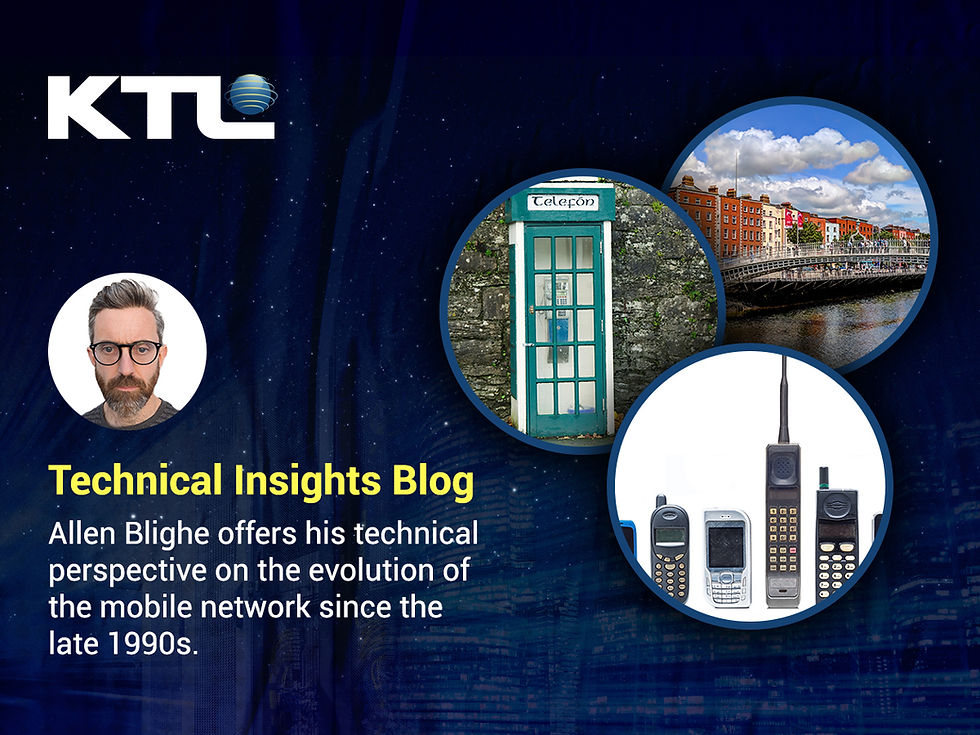Let’s talk about telecoms design
- KTL
- Feb 9, 2023
- 3 min read
Updated: Jun 11, 2023

As operators face a growing demand to expand their networks, new technology is helping to develop designs for new sites and site upgrades like never before. With drones and AI set to revolutionise the process even further, operators will have access to designs with perspective and information at an entirely new level.
KTL’s Dylan van Belkum, CAD Manager discusses here what exactly telecoms design is, what challenges the industry is facing in this area, what KTL is doing to combat those difficulties and why working in design is more exciting than ever.
What is telecoms design?
Telecoms design involves taking a set of instructions from a client and providing a set of scaled design documents for a new location or the upgrade of an existing location.
An onsite survey is conducted to gather information and measurements to assess whether the location or required technical specifications can be achieved, and to gather health and safety information.
Once that is completed, the team creates a detailed design, including construction instructions and a design risk assessment to ensure any on-site risks are reduced.
How is design changing?
Advances in technology over the last few years have hugely changed the creation of telecoms designs.
We can now pan right around 360-degree environments of the mast and site to ensure the upgrade technology and path is going to deliver the best experience possible for customers, and that is only going to become more detailed over the next few years.
Things such as the utilisation of drones for site capture and design, paired with AI, is going to revolutionise the way designs are created even further. Introducing these elements will drastically change the way operators view their plans for infrastructure investment – providing far better and clearer information than has ever previously been available.
The time for design is now!
What unique expertise does KTL bring to design?
I’d say the two big things that KTL has on its side are experience and attitude.
The company’s been working in the industry for 25 years, and has long-term in-house experts from designers, CAD technicians, engineers (electrical, civil and structural), to project managers. Across the board, we’ve seen all the right ways to do things, and all the wrong ways.
But along with that experience to guide us, there’s also an unshakable can-do attitude within KTL that is reflected in the design process. Everyone is fast to embrace new technology and find better ways of doing everything.
Telecoms is often known not to invest in training staff, so I’m glad to say KTL is constantly providing opportunities to upskill. Providing new and regular training opportunities has helped individuals grow into new positions and brought more knowledge to our designs and how we work.
It’s an exciting time to be involved in design, but every area faces challenges. What are yours?
There are definitely hurdles and they largely come back to minimising costs while providing the most efficient designs. For operators, there is a constant battle to modernise networks and infrastructure whilst being watchful of spending. Maintaining a long-term strategy with technology constantly moving forward and keeping up with competitors is a key part of this challenge.
Sustainability provides challenges because running a mobile network consumes a lot of power. Setting up a new site or upgrade also has a relatively large carbon footprint - due to the need to ensure network quality there is also a need for multiple site visits within a couple of years.
Maintaining health and safety standards is another challenge when creating designs, largely because of the fast-paced nature of projects rather than the typically longer timeframes for construction projects you find in other industries.
What’s coming in the next few years?
The next three to five years are going to be possibly the most exciting time in the telecommunication design and EV charging design spaces.
I expect to see continued and accelerated growth within both markets. Together, with a revolution in how design is managed and produced with drone capture and AI, it is going to be an extremely exciting journey to be part of.




Comments